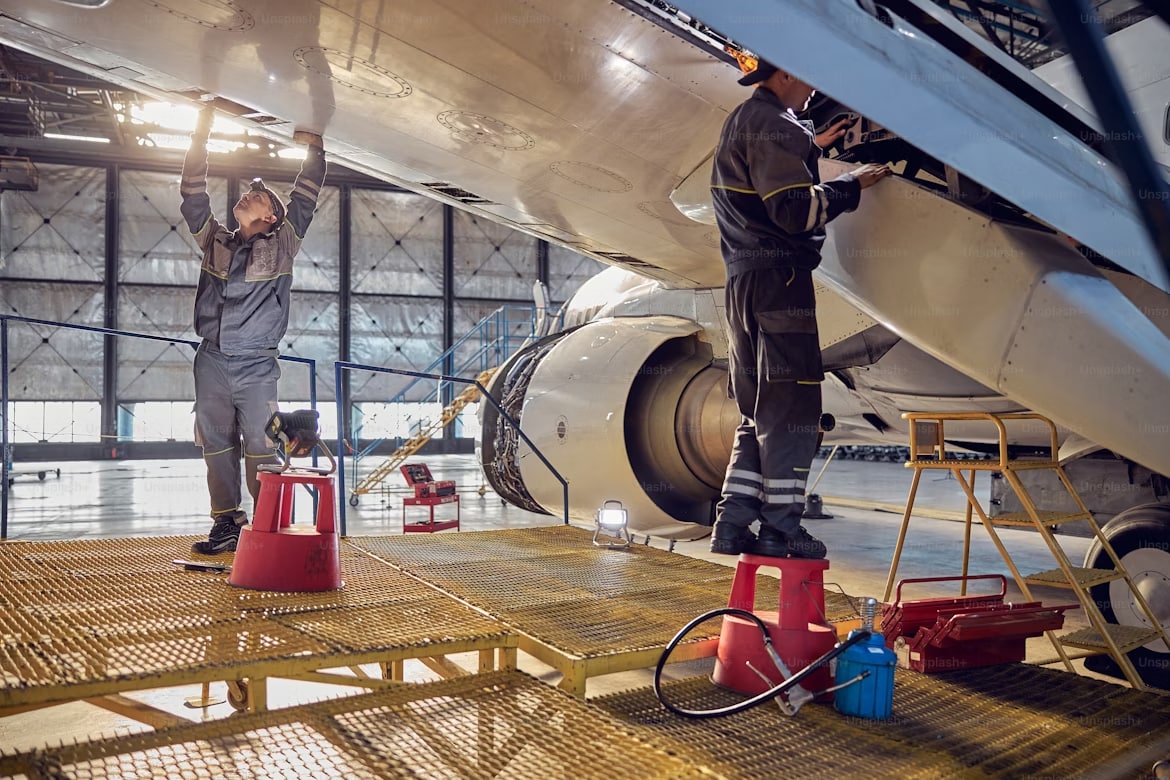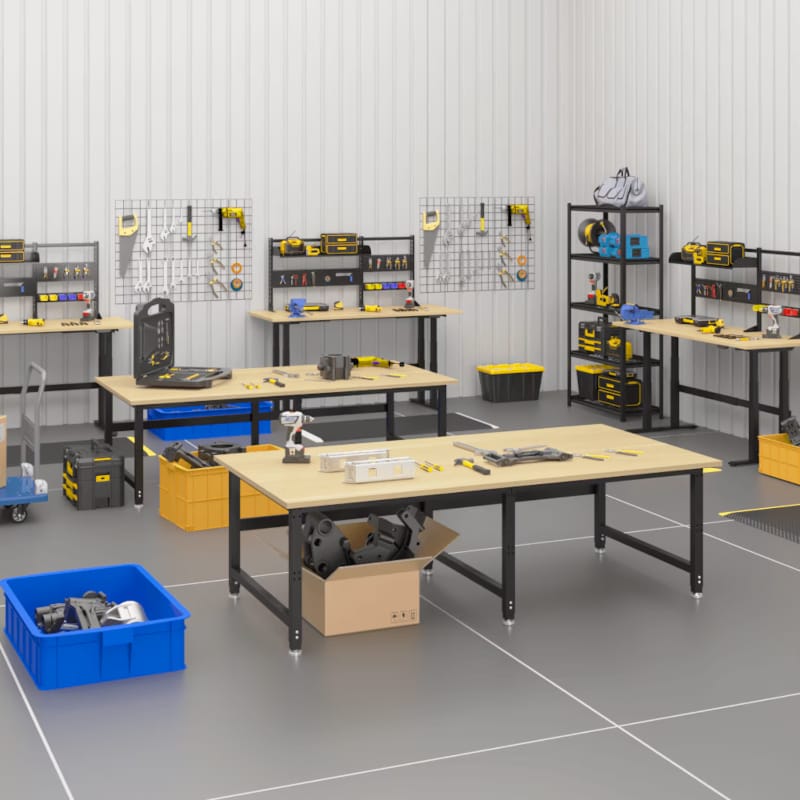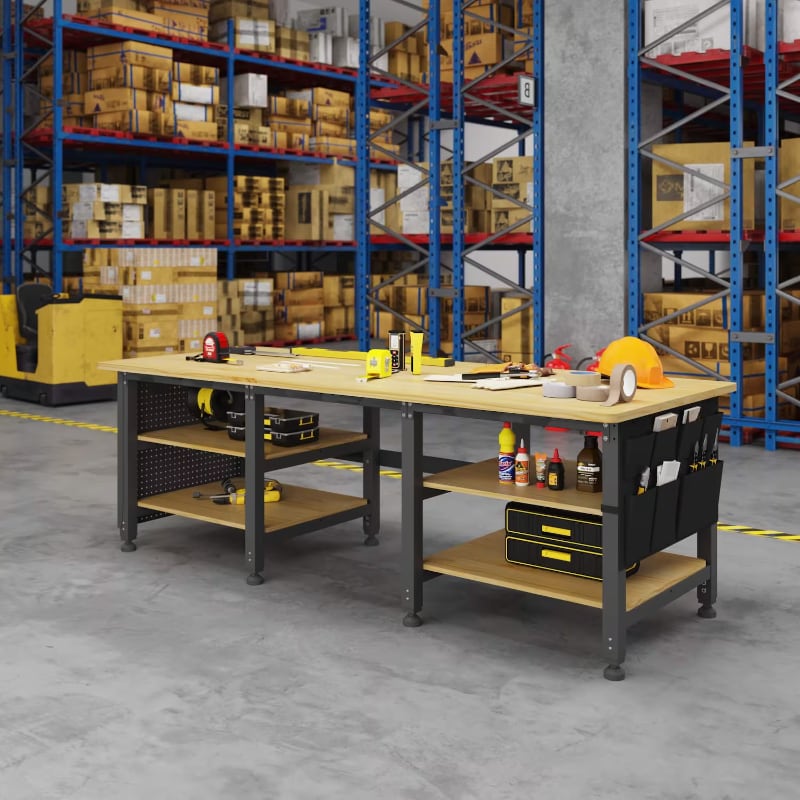In an aerospace maintenance hangar, a technician prepares to recalibrate an avionics unit worth over $150,000. The task requires micron-level precision, vibration-free stability, and a workstation that supports extended periods of highly focused labor. Yet many facilities still rely on generic tables never designed for technical accuracy or safety. That’s where a 4Dock industrial workbench comes in—engineered to meet the high standards of aviation repair.In aviation, where even minor errors can have major consequences, a properly designed industrial workbench isn’t a luxury—it’s a necessity. According to the U.S. Bureau of Labor Statistics, musculoskeletal disorders (MSDs) account for over 30% of injuries in manufacturing and maintenance sectors, often due to poorly configured workstations and repetitive strain.This article examines how aerospace-grade, heavy-duty workbenches can mitigate technician fatigue, enhance operational accuracy, and prevent costly mistakes. We’ll examine the physical demands of avionics and MRO (Maintenance, Repair, Overhaul) environments, uncover the specific design features required, and show how the right bench can transform your workspace into a safer, more efficient, and more ergonomic repair zone.

Key Challenges in Aerospace Repair Workstations
Lack of stability
Calibration, soldering, or diagnostics require vibration-free surfaces. A wobbly table can compromise test data or lead to micro-errors in wiring and connections—issues that might go undetected until system testing, or worse, field operation. NASA’s Human Integration Standard (NASA-STD-3001) recommends reinforced frames and high structural rigidity to ensure operator control and task accuracy. For environments like these, relying on a generic workbench is a serious risk.
Insufficient workspace
Modern aviation repair often involves multiple instruments—oscilloscopes, power supplies, spectrum analyzers—all needed within arm’s reach. When two technicians share a station, anything under 72 inches quickly becomes crowded. As noted by one technician on Reddit, “Going from a 6' to an 8' table changed everything—we could finally organize.” It’s not just about surface area; it’s about creating space for safe, efficient collaboration in high-pressure environments.
Ergonomic fatigue
Technicians often spend hours in static, awkward positions—reaching, bending, leaning over test rigs—because most legacy benches don’t allow height adjustment. Over time, this leads to shoulder strain, back pain, and reduced focus. The FAA and OSHA both rank musculoskeletal disorders (MSDs) among the leading causes of workplace injury in MRO operations. A properly designed ergonomic workstation can dramatically reduce long-term fatigue and improve daily output.
Poor tool organization
When tools and small components are scattered across the surface—or worse, misplaced entirely—productivity suffers. More critically, they pose a significant FOD (Foreign Object Debris) risk in aerospace environments. Best practices call for foam-insert drawers, vertical pegboards, and clearly defined storage zones to ensure that every item has a place and nothing is left behind. Even the most skilled technician is slowed down by an inefficient workspace.
Lack of modular integration
As aircraft maintenance shifts further toward digital diagnostics, tablets, reel systems, label printers, and component trays are now part of the standard workstation layout. But many existing setups lack support for modular integration—there’s nowhere to mount power strips, no arm for overhead lighting, no slots for upper storage. The IAC’s guidance on ergonomic workstations stresses the importance of configuration flexibility. Without it, the station becomes a bottleneck.
📌 These are not small problems—they’re daily operational frictions that drain focus, increase error rates, and limit throughput. A truly aerospace-ready workstation must address all of them, starting from its structure and materials, all the way to adjustability and integration. In the next section, we’ll show how the 4Dock industrial workbench WB5 was built precisely for that.
How the 4Dock WB5 Meets Aerospace Workstation Requirements

Stability & Anti-Vibration Structure
Most standard workbenches use a four-leg frame, which may suffice for small-scale maintenance. But in aerospace applications—especially where fine calibration, soldering, or sensor testing is involved—a six- or eight-leg steel frame offers essential advantages. It evenly distributes mechanical stress, improves torsional rigidity, and significantly reduces vibration transfer, ensuring measurement accuracy and tool stability.
📌 NASA’s Human Integration Standard (NASA-STD-3001) recommends reinforced frames with structural damping in high-frequency, repetitive-use workstations.
✔ The 4Dock WB5 features a six-leg industrial welded frame for maximum rigidity and vibration resistance—ideal for avionics and mechanical maintenance.
Extra-Large Work Surface for Multitasking
Modern aerospace maintenance often requires multiple technicians and instruments on a single bench. From power analyzers to tablets to component bins, space is critical. The WB5’s 94" × 48" work surface exceeds most ergonomic standards.
📌 NIOSH recommends ≥48" wide for solo work; FAA MRO guidelines suggest ≥36" width per person. A 94" bench accommodates two technicians with optimal room for movement.
✔ The WB5 offers a full 8-foot (94") top, giving you room to organize, repair, and collaborate without compromise.
Heavy-Duty Load Capacity
When servicing avionics modules, power tools, and test rigs, load-bearing stability is non-negotiable. A properly rated workbench prevents center sagging or deformation under pressure.
📌 According to Lista, IAC, and Bott, the “heavy-duty” workbench classification begins at 3,000 lbs (UDL). Aerospace-grade units often require 3,000–5,000 lbs due to equipment density.
✔ WB5 supports 3,000 lbs of evenly distributed weight, providing strength and peace of mind for every operation.
Ergonomic Height Adjustment
Fixed-height benches are a leading cause of technician fatigue. Whether standing, seated, or switching positions, height adaptability is crucial.
✔ The WB5 includes manual height adjustment from 30" to 36", allowing each user to optimize posture and reduce strain.
📌 According to OSHA and FAA, adjustable workstations lower musculoskeletal disorder (MSD) risks and increase long-term output.
Work Surface Material
The WB5 features a thick rubberwood top—an industry-preferred material for its vibration-damping and durability. Rubberwood is widely used in industrial workbenches for electronics, repair, and general assembly tasks. For cleanroom or chemical-sensitive environments, stainless steel surfaces are recommended. Particleboard options are available on other models for economical packaging or warehouse tasks.
📌 Lista and other industrial furniture manufacturers often recommend hardwood butcher-block surfaces for precision tasks due to their stability and durability.
Tool Storage & FOD Safety
Dropped fasteners or scattered screwdrivers aren’t just inconvenient—they pose FOD (Foreign Object Debris) risks. Aerospace MRO environments demand structured tool control and safe organization.
✔ While the WB5 does not support built-in drawers, pegboards, or shelf dividers, 4Dock offers complementary storage solutions:
• Mobile workstation carts for tools and electronics
• Lockable tool cabinets for secure and FOD-safe tool storage
📌 For users requiring integrated lower shelving, consider the 90" x 36" Adjustable Workbench, which supports wire or particleboard shelf configurations.

Modular Expandability
No two aerospace repair stations are identical. You may need reel holders, label printers, task lights, or integrated power.
✔ WB5 supports modular expansion through accessories such as upper lighting arms, reel holders, power strip brackets, and packaging modules. These components allow the workstation to adapt to evolving technical requirements.
📌 As recommended by IAC and the IAWG Ergonomics Subcommittee, high-mix, low-volume environments benefit most from modular bench design.
Final Words
“We’ve used a 6-foot bench for years and always had issues with clutter. Switching to a larger 8-foot table made a huge difference—tools stay organized and there’s less downtime between tasks.” — Technician on RedditNot all benches are built for aerospace. In MRO environments, workspace layout, frame stability, and accessory compatibility directly impact quality, safety, and repair time.Choosing a purpose-built bench like the 4Dock WB5 means giving your team a central, ergonomic, and high-performance workstation, engineered for industrial standards.Explore aerospace-ready workstations and customize your setup: 👉 4dock workstation.

